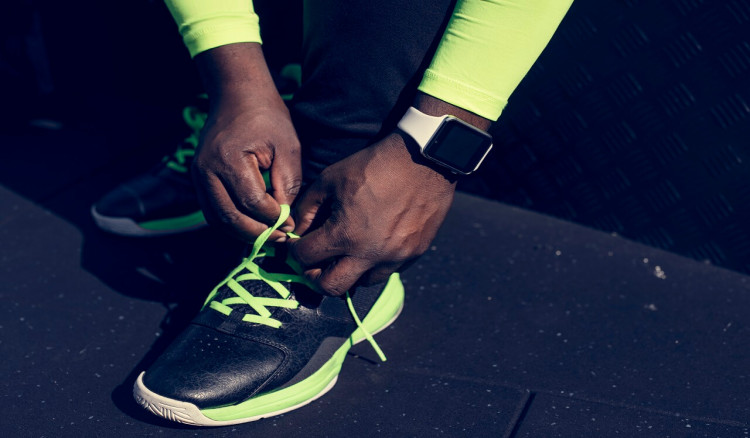
How To Take Care Of Your Feet
The feet are intricately designed to act both as a lever (when we move) and as a pedestal (when we stand). The anatomy of the human foot has changed hardly at all from the time of our earliest ancestors; what has changed is the way we use our feet.
We walk and run less. Moreover, we subject the bones and muscles of the feet to the strains of high heels and poorly fitting shoes. No wonder that so many middle-aged and elderly people suffer from foot problems.
Our feet perspire freely, and when they are enclosed for long periods in nonporous footwear—such as vinyl boots or shoes—the perspiration cannot evaporate. Peeling or cracking of the sole along the creases is as a result of this overly humid condition. It is important to wash your feet daily, wear clean socks or stockings, and give your feet sometime in the air. Cut toenails every one to two weeks.
If hot weather tends to make your feet and ankles swell, wear comfortable porous shoes and prop your feet up for a rest each day. If the swelling is marked or persistent, see your doctor, because this condition is sometimes a symptoms of disease in another part of the body.
The Shoes You Wear
Heels much higher than two inches tend to tilt the body forward, demanding a compensatory curving of the spine. Backache, foot pain, and foot deformities can be traced to prolonged use of high heels. But ill-fitting shoes, which cramp the toes or restrict the circulation, are perhaps worse. If your foot is normal, choose a flexible shoe with rounded, rather than pointed, toes and a straight inner border.
A good-fitting shoe is about three-quarters to one inch longer than the foot by outside measurement, and it should fit well around the ankle and instep. A loose shoe, in which your foot slides forward enough to compress the toes, can be just as bad as a tight one. Bunions and the painful turning-in of the big toes can result from ill-fitting shoes.
Too much standing or walking on hard surfaces can cause footache, and poor foot alignment in standing or walking can cause strain. When you stand or walk, your feet should be parallel with each other, toeing neither out nor in.
Foot Troubles
If you think your feet are not normal, do not buy any kind of ‘remedial’ shoe or get arch supports without consulting a doctor. You may be ‘correcting’ the wrong thing; your trouble may be caused by something other than the shoes you are wearing.
Flatfeet and Fallen Arches
All babies and many children have the appearance of flatfeet because their developing arches are hidden in pads of fat. Even in adults, flatfeet need be no problem, as long as the feet are strong. If you are overweight however, you are putting an unnecessary strain on the arches and muscles of your feet. Don’t decide with the help of a shoe salesman that either flatfeet or fallen arches are your trouble; only a doctor can diagnose such conditions properly
Corn and Calluses
A callus is a thickening or overgrowth of the skin in areas subjected to intermittent pressure. A corn is one type of callus that most often afflicts the toes of a person whose shoes pinch. These growths can be painful and unsightly, and the best way to avoid or cure them is to purchase and wear better-fitting shoes.
Ingrown Toenails
This painful condition often occurs when shoes are so tight that they cause pressure on the sides and top of the toe, and the edge of the nail begins to cut into surrounding skin and tissue. A chronic inflammation can result. Cutting the toenail straight across, with the edges a bit longer than the middle, will help prevent it.
Bunions
A bunion is a deformity of the big toe, almost always caused by wearing shoes that force it to turn in toward the other toes. It is frequently associated with flat or weak feet. In mild cases, the pain can be relieved by heat, and the condition will correct itself after properly fitting shoes have been worn for some time. In more severe cases, a doctor should be consulted; a surgical operation may be necessary to correct the condition
Athlete’s Foot (Dermatophytosis)
This condition occurs when sweaty, damp feet become infected with a fungus. Usually, there is itching and cracking between the toes, peeling and sometimes raw blisters. It is a very annoying condition that can best be prevented by keeping the feet washed and by dusting a little talcum powder between the toes to absorb dampness.
Cotton socks absorb perspiration better than wool or synthetics. Do not go barefoot in public bathing places or locker rooms where the fungus most often thrives. In hot weather, when the irritation is most likely to worsen, wear well-ventilated sandals or light porous shoes.
Athlete’s Foot Treatment
Good foot care is indispensable. The scaly or damp peelings should be rubbed gently away. Dry the feet. Apply water mixed with a little rubbing alcohol. Dry the feet again, and apply dusting powder. Try to expose the feet to the air as long as possible. When you go to bed, and again in the morning, put a mild fungicidal ointment on the infected area. Wear cotton or wool socks, which absorb perspiration unlike socks of synthetic materials. In hot weather, wear light shoes.
REFERENCES
Everyday Footwear: An Overview of What We Know and What We Should Know on Ill-Fitting Footwear and Associated Pain and Pathology by Helen Branthwaite and Nachiappan Chockalingam
Pathology and Management of Flexible Flat Foot in Children by Yoshino Ueki, Eisuke Sakuma and Ikuo Wada
Effects of Short-Foot Exercises on Foot Posture, Pain, Disability, and Plantar Pressure in Pes Planus by Banu Unver, Emin Erdem and Eda Akbas
Hallux Valgus (Bunion) by James Kuhn and Farhan Alvi






Share This Article: